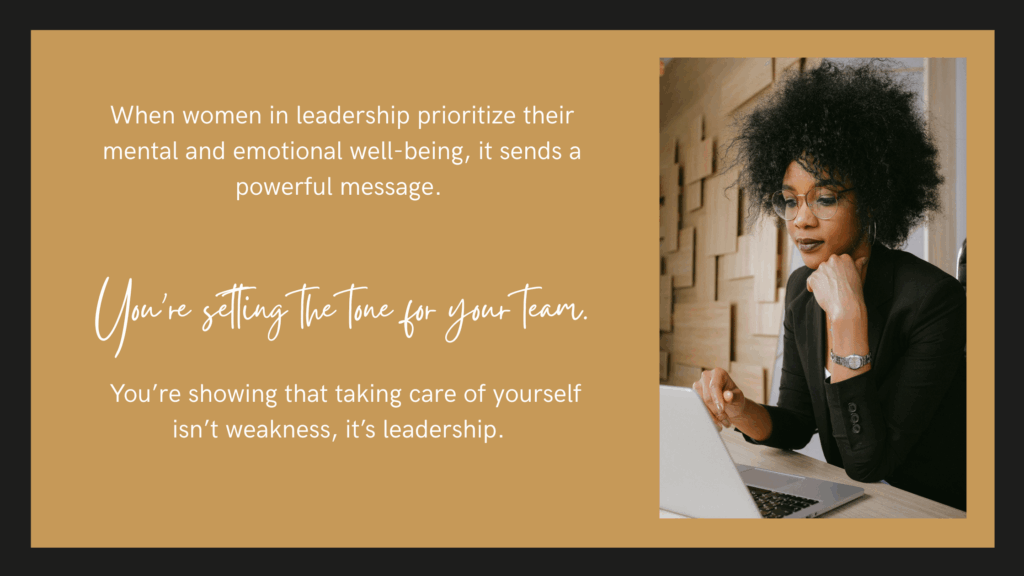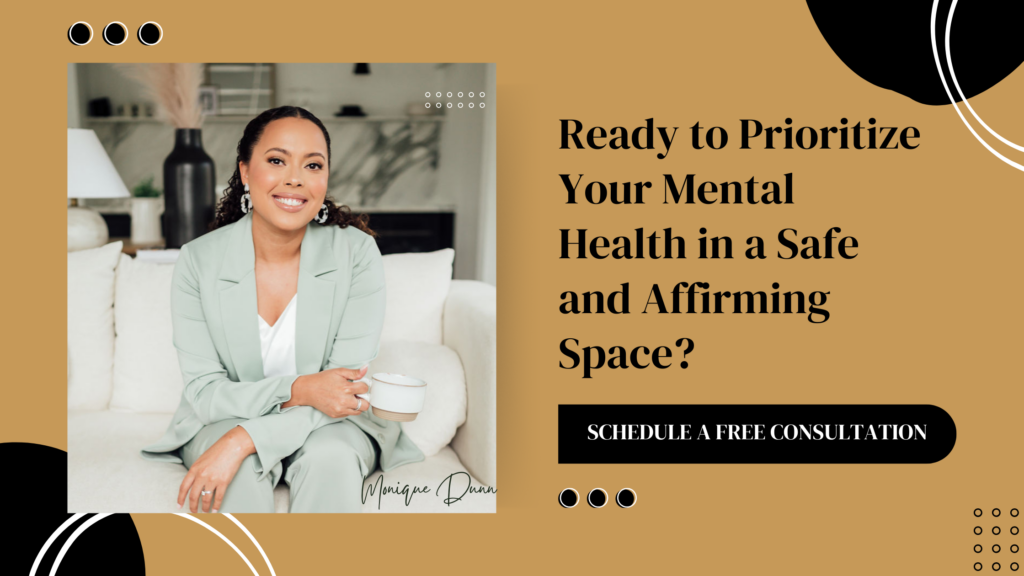Let’s be honest, being a woman in a leadership role is no small feat. Between the nonstop meetings, high expectations, and constant decision-making, stress can feel like an unavoidable part of the job. While bubble baths or spa days offer a temporary escape, the truth is, lasting stress relief requires more than just occasional pampering. It takes intentional habits, mindset shifts, and a deeper understanding of what your body and mind truly need. As women navigating leadership in fast-paced environments, we face unique challenges that deserve more than surface-level solutions.
In this post, we will be discussing realistic, effective ways to manage stress. From mindful leadership practices to personalized self-care routines, we’ll be sharing holistic approaches that help you stay grounded, energized, and in control…even on the busiest days.
Table of Contents
Understanding the Unique Stress Female Leaders Face
For women in executive roles, stress doesn’t just come from a busy schedule; it’s layered and often tied to the unique pressures that come with navigating leadership in spaces that still tend to be male-dominated. There’s the pressure to constantly prove yourself, to perform at the highest level, and to juggle professional success with personal responsibilities, especially when it comes to family. It’s a balancing act that can feel relentless, and it creates both mental and physical stress.
Then there’s the added weight of societal expectations. Assertiveness in women can still be misunderstood or criticized, and that double standard can wear you down over time. When you’re constantly managing how you’re perceived, walking that fine line between confident and “too much”, it’s no wonder so many women in leadership feel burned out. It’s not just about doing the job well; it’s about doing it while also carrying the emotional toll of judgment and bias.
Let’s not forget the isolation. As you rise in leadership, it can feel like fewer and fewer people truly understand the weight you’re carrying. Without a solid support system or community of like-minded women, it’s easy to feel like you’re navigating it all alone. Recognizing these stressors for what they are is the first real step toward creating strategies that actually help…not just to cope, but to thrive.
Why Effective Stress Relief Matters
Effective stress relief is not just about getting through a busy day; it’s about protecting your long-term health and maintaining professional success. Chronic stress can lead to various physical and mental health issues, including cardiovascular disease, depression, and anxiety. For female executives, the stakes are even higher, as their leadership roles constantly demand high performance and resilience.
For these women, finding real, effective ways to manage stress isn’t a luxury, it’s a necessity. When your mind is clear and your nervous system is not constantly in overdrive, you can truely think better. You make smarter decisions, solve problems faster, and have more room for creativity and big-picture thinking. And let’s be honest…when you’re less overwhelmed, you’re also a lot more present with the people around you, both at work and at home.
Something that is often not emphasized enough is that when women in leadership prioritize their mental and emotional well-being, it sends a powerful message. You’re setting the tone for your team. You’re showing that taking care of yourself isn’t weakness, it’s leadership. It creates space for others to do the same, which builds a healthier, more supportive work environment all around.
So no, stress relief isn’t just about candles and calming music (though those help too); It’s about building habits that keep you grounded, resilient, and ready to lead.
Common Misconceptions About Stress Relief
When it comes to managing stress, there are a few common misconceptions. Let’s break them down:
“Stress relief has to be time-consuming or expensive.”
Think spa days, retreats, or long getaways. While those are nice, they’re not the only or most effective ways to destress. Small, consistent habits, like taking a short walk, setting boundaries, or pausing to breathe, can have just as much impact, if not more.
“There’s a one-size-fits-all solution to stress.”
Not true. What works for someone else might not work for you, and that’s especially important to remember as a woman navigating leadership. Your stressors are unique, and your approach should be too. Understanding your own triggers and needs is essential for real relief.
“Stress relief is a luxury, not a necessity.”
In high-pressure roles, taking time for yourself can feel indulgent, but it’s not. Prioritizing stress management isn’t just good for your well-being; it’s critical for healthy, focused, and effective long-term.
Bottom line: stress relief isn’t about doing more, it’s about doing what works for you.
Holistic Approaches to Stress Management
When it comes to managing stress in a meaningful way, quick fixes just don’t cut it. What really makes a difference is a holistic approach, one that treats your mind, body, and spirit as connected parts of the same system. It’s not about adding more to your to-do list; it’s about being intentional with the things that actually support your well-being. A holistic stress strategy pulls together different pieces that work together to create real, lasting relief. This may look like movement that feels good, mindfulness practices that keep you grounded, eating in a way that fuels your energy, and surrounding yourself with people who genuinely lift you up.
One key aspect of holistic stress management is the practice of mindfulness and meditation. These practices help you slow down, breathe, and feel present. That sense of presence can make all the difference in how you handle stress, helping you stay calm, think clearly, and avoid getting overwhelmed. With regular practice, mindfulness can also boost your creativity and decision-making.
Physical activity is another important aspect of holistic stress management. Moving your body, whether it’s a quick walk, a yoga flow, a workout, or simply stretching between meetings, has been shown to reduce stress hormones and increase endorphins, which are natural mood boosters. Physical activity also provides an outlet for releasing built-up tension and energy, leading to a more relaxed state. Including regular exercise in a busy schedule can be challenging, but the benefits make it a worthwhile investment.
Mindfulness and Meditation Techniques for Busy Professionals
Mindfulness and meditation are powerful tools for managing stress, particularly for busy professionals. These practices can be easily integrated into your daily routine, providing immediate and long-term benefits.
One of the easiest ways to start? Mindful breathing. It’s exactly what it sounds like, taking a moment to focus on your breath. You can do it while waiting for your next Zoom call to start, in the car before walking into the office, or even while making your morning coffee. Just a few slow, intentional breaths can help bring your attention back to the present moment and give your nervous system a much-needed reset. If you don’t know how to start or simply have some extra time, you may want to try guided mindful breathing.
Another powerful tool is body scan meditation. It’s a simple practice where you mentally check in with different parts of your body, without judgment. This is especially helpful if you experience stress-related physical symptoms, such as headaches or muscle tension. Spending just five minutes tuning into your body can help release that tension and bring a sense of calm.
It’s important to keep in mind that mindfulness doesn’t just come in these forms. You can also bring it into your regular routine with little tweaks like mindful eating, where one pays full attention to the experience of eating, or mindful walking, where one focuses on the sensations of walking.
By bringing mindfulness into daily routines, busy executives can create moments of calm and clarity, lowering overall stress levels and improving their ability to manage challenges effectively.
The Role of Physical Activity in Reducing Stress
Physical activity is a key part of effective stress management. Regular exercise helps to regulate stress hormones, such as cortisol, and increases the production of endorphins, which are natural mood elevators. For female executives, finding time for regular exercise can be challenging, but the benefits are worth it. Exercise can be a form of meditation, allowing executives to clear their minds and focus on the present moment. Whether it’s a yoga flow, a run, or a dance class, finding a form of physical activity that is enjoyable can make it easier to stick with a regular exercise routine.
Physical activity can also enhance your social connections, which are incredibly important for stress management. Group exercises, like fitness classes or team sports, give you opportunities for social interaction and support. By integrating regular physical activity into their routines, female executives can improve their physical and mental health, which in turn can better their ability to thrive in their professional roles.
Building a Supportive Work Environment
When it comes to managing stress, especially in leadership, your environment matters. A supportive, inclusive workplace isn’t just a nice-to-have; it’s essential for both your well-being and the effectiveness of your team.
For women in executive roles, building that kind of environment means being intentional about the policies and practices you set in motion. Things like flexible work options, mentorship opportunities, and mental health support are foundational to reducing burnout and helping everyone thrive.
But it’s not just about the systems in place, it’s also about how we communicate. Normalizing honest conversations around stress and balance is key. Whether it’s checking in regularly with your team, holding space for tough conversations, or making mental health resources accessible, creating room for open dialogue can make a huge difference. When people feel safe to speak up, everyone benefits.
Also, don’t underestimate the power of recognition. Taking time to genuinely celebrate wins, big or small, can seriously boost morale and help ease the day-to-day pressure. Whether it’s through formal shout-outs or quick thank-yous, showing appreciation goes a long way.
A truly supportive work environment starts with leadership that’s human, aware, and willing to lead with empathy. When you build that kind of space, you’re not just managing stress, you’re also creating space for people, yourself included, to grow, connect, and succeed.
Time Management Strategies for Stress Reduction
Effective time management is crucial for reducing stress and maintaining a healthy work-life balance. For women in executive roles, learning how to manage time with intention is essential.
One simple but powerful strategy is time-blocking, where specific blocks of time are allocated for different tasks. This can help to create a structured schedule and reduce the feeling of being overwhelmed.
Setting boundaries is also important for managing time and reducing stress. That means being clear with yourself and others about when you’re working and when you’re not. It’s okay to shut your laptop at a certain time or take time off without guilt. Communicating your limits to your team is part of building a healthier, more respectful workflow for everyone involved.
Delegating responsibilities is another key strategy for effective time management. Female executives often feel the need to take on multiple roles and responsibilities, which can lead to burnout and increased stress. Learning to delegate tasks to team members and trusting them to handle these responsibilities can lessen the workload and create more time for strategic planning and self-care. By effectively managing time, female executives can reduce stress and better their overall well-being.
Creating Your Personalized Stress Relief Plan
There’s no one-size-fits-all solution when it comes to managing stress. That’s why building a personalized stress relief plan is so important. It’s not just about checking off a list of self-care tasks, it’s about understanding what you need to stay grounded, focused, and healthy.
The first step in crafting a personalized stress relief plan is to identify personal stressors and triggers. Take a moment to reflect on what tends to set you off or wear you down. Is it a packed schedule? Constant decision-making? The pressure to always be available? Whatever it is, identifying your personal stress triggers is key to finding relief that actually works for you.
Next, it’s important to identify personal preferences and needs. Maybe it’s morning walks, journaling, or five minutes of deep breathing between meetings. Maybe it’s setting firmer boundaries around work hours or saying no more often. It’s important to remember that stress management is a highly individualized process, and what works for one person may not work for another. By experimenting with different strategies and finding what resonates, executives can develop a personalized stress relief plan that is effective and sustainable.
Finally, it’s important to regularly review and adjust your stress relief plan as needed. Life shifts, seasons change, and so do your needs. Check in with yourself regularly and be willing to adapt your routine. The most effective stress relief plan is the one that evolves with you and supports you where you are.
When to Seek Therapy or Coaching
While self-care and stress management strategies are important, there are times when professional help is needed. Therapy and coaching can provide valuable support and guidance for managing stress and improving overall well-being. For female executives, seeking professional help can be particularly beneficial for addressing the unique challenges they face in their roles.
Therapy can provide a safe space to explore and address underlying issues that contribute to stress. This can look like working with a therapist to develop coping strategies, improve emotional regulation, and address any mental health concerns. Therapy can also provide support for navigating work-related challenges, such as managing difficult relationships or dealing with workplace discrimination.
We Are Here To Help
This is at the heart of Destination Therapy. We support high-achieving women and female executives who are navigating the emotional toll of leadership roles. We understand the unique stressors these clients face, like anxiety, burnout, perfectionism, and the pressure to show up flawlessly in demanding environments.
If you are a female executive juggling work and family, struggling with anxiety, or feeling trapped by the need to be perfect, we are here to guide you every step of the way.





